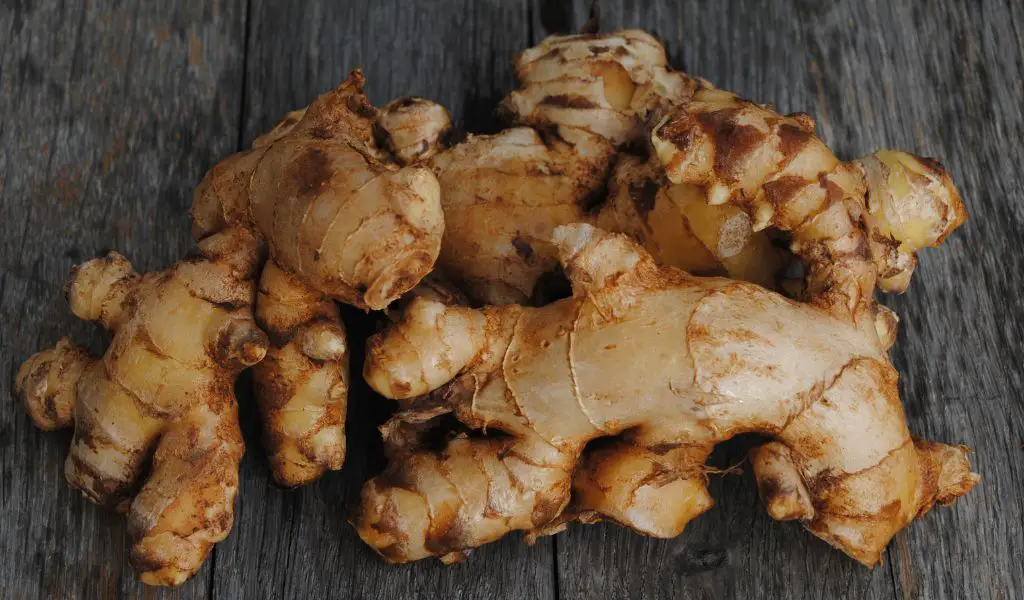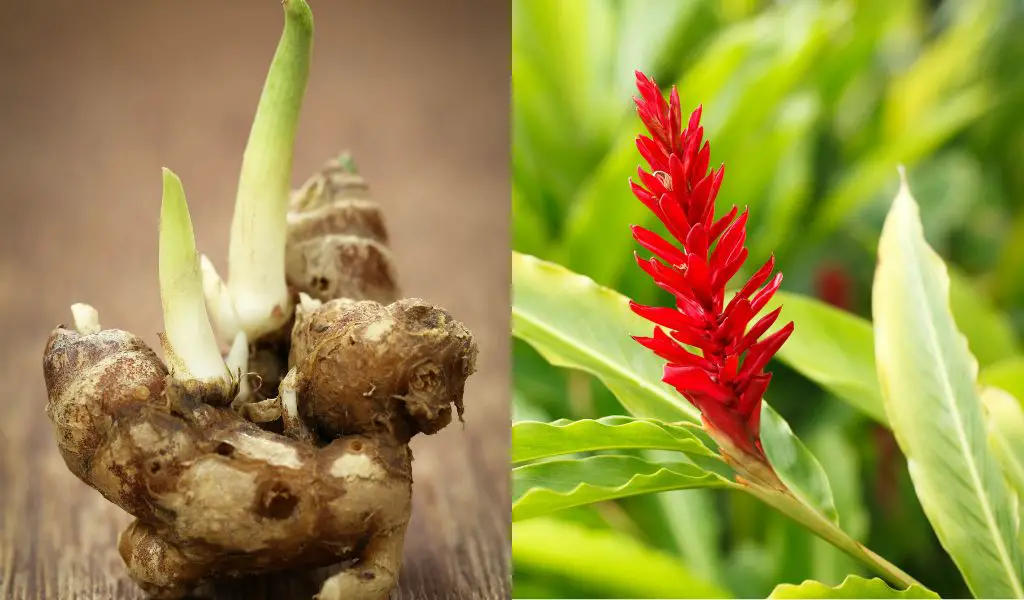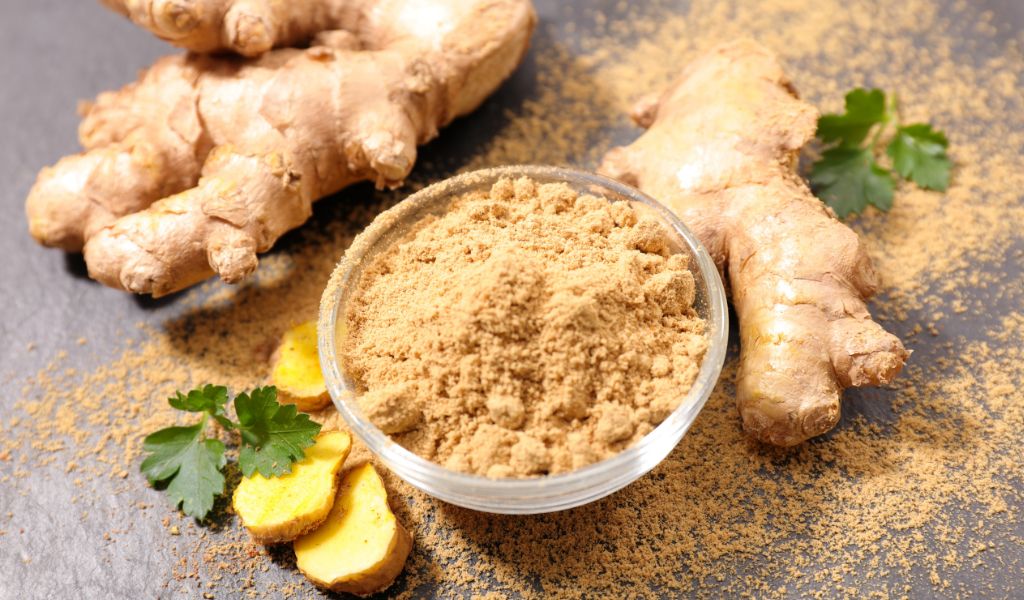A Brief Overview of the Popularity of Ginger
Ginger has been a staple ingredient in cooking for centuries, adding a unique flavor and aroma to dishes.
However, its popularity goes beyond just taste. Ginger has been used in alternative medicine for its medicinal properties, including reducing inflammation, aiding digestion, and alleviating nausea.
As a result, ginger has become an essential ingredient in many health-conscious diets. But as we all know, fresh ginger can be pricey at the grocery store.
That’s where the idea of planting store bought ginger comes into play. Instead of spending money on buying fresh ginger every week, why not grow your own?
It sounds like a great idea in theory – but is it worth the effort? Let’s find out.

Can You Plant Store Bought Ginger?
The answer is yes! You can plant store bought ginger and get it to grow by following some basic steps.
However, there are some things you need to consider before embarking on this planting journey.
First off, you need to choose the right type of ginger root.
Not all types are suitable for growing – so make sure you choose one that is labeled as organic or untreated (non-irradiated) if possible because these will have more potential growth nodes than ones that have been treated with chemicals or irradiation.
Another point to consider is the location and soil conditions for growing your ginger plant.
The best place to grow your plant would be in an area with partial shade or filtered sunlight as prolonged exposure to full sun could dry out your plant quickly – not ideal when it comes to ginger plants since they prefer moist soil conditions.
Owning a greenhouse would be ideal because they mimic tropical environments where most varieties of gingers are grown!
But if you don’t have one, don’t worry, you can cultivate ginger indoors too.
Should You Plant Store Bought Ginger?
So, is it worth the effort to plant store bought ginger?
Absolutely! For foodies and health enthusiasts alike, planting your own ginger can be a fulfilling experience that saves you money in the long run.
I’m not saying this process will be easy or provide an immediate return – it’s more like an investment for future culinary delights and medicinal benefits.
When you grow your own ginger plant, you’ll have access to fresh ginger whenever you need it – all year-round if grown indoors.
And let’s face it – fresh ingredients always taste better than store-bought ones that have been sitting on shelves for weeks.
In addition to the culinary benefits of planting your own ginger, there are also many potential health benefits associated with consuming freshly harvested ginger roots.
From reducing inflammation to helping alleviate nausea and pain – the list of health benefits is extensive.
Ultimately, planting store bought ginger requires some effort and patience on your part but results in tasty dishes and some significant health gains for both foodies and health-conscious individuals alike – so why not give it a try?

The Basics of Ginger Planting
Ginger: The Staple Ingredient of Many Cuisines
Ginger is an indispensable ingredient in the kitchen and is widely used in many cuisines worldwide.
As a spice, ginger has a unique flavor that adds depth to dishes, and as a root, it is full of health benefits.
It’s no surprise that many people are curious about growing their own ginger plant at home.
Fortunately, planting store-bought ginger is easy and can be done by anyone with little to no experience.
Steps to Planting Store Bought Ginger
When planting store-bought ginger, the first step is choosing the right ginger root.
Look for firm roots with smooth skin and several buds or “eyes.”
Once you have chosen your ginger root, break it into smaller pieces with at least one bud each. These pieces will be used for planting.
Next, prepare your soil mixture by combining potting soil and compost or well-decomposed manure in equal parts. Make sure the potting mix drains well but also retains moisture.
Fill a shallow container with your soil mixture and place the ginger pieces on top of the soil with their buds facing up. The container should be at least 8 inches deep to allow room for growth.
Cover the ginger pieces with about an inch of soil and water gently until moist but not saturated.
Place the container in a warm area that receives partial sunlight.
Watering and Care for Your Ginger Plant
Ginger plants require regular watering to thrive but can also be easily overwatered if left in standing water.
Keep the soil moist but avoid waterlogging by checking drainage holes frequently.
Fertilize your plants once every two weeks with a balanced fertilizer that contains all essential nutrients such as nitrogen, phosphorus, and potassium.
Ginger plants prefer warm temperatures above 50°F and indirect sunlight. They also need enough space to spread out their roots, so re-potting may be necessary if the container becomes too small.
Overall, planting store-bought ginger is a simple and enjoyable activity that anyone can do regardless of their gardening experience.
With proper care and attention, your ginger plant will reward you with fresh, flavorful ginger that you can use in your cooking or for its health benefits.
The Benefits of Growing Your Own Ginger
Health Benefits of Consuming Fresh, Homegrown Ginger
Are you tired of buying ginger from the store that has been sitting on the shelves for who knows how long?
Do you want to ensure the ginger you are consuming is fresh and packed with all its health benefits?
Then growing your own ginger is the solution for you.
Fresh, homegrown ginger contains higher levels of gingerol, a compound known for its anti-inflammatory and antioxidant properties.
These properties have been shown to aid in reducing muscle pain and soreness, lowering blood sugar levels, and improving heart health.
By growing your own ginger, you can ensure that it has not been treated with any harmful pesticides or chemicals that may be present in commercially grown produce.
Cost Savings Compared to Buying Fresh or Dried Ginger at Stores
Not only does growing your own ginger provide greater health benefits, but it also offers cost savings in comparison to buying fresh or dried ginger at stores.
A small piece of store-bought ginger can easily cost a few dollars depending on where you live.
However, by investing in a small patch of land or even a pot for your home-grown plants, you can harvest fresh ginger throughout the year without breaking the bank.
Additionally, dried ginger often has added preservatives and sugars that diminish its potential health benefits.
By growing your own fresh ginger and allowing it to dry naturally without added chemicals or preservatives, you can rest assured that you are consuming a pure source of this superfood.
Growing your own ginger provides numerous benefits including higher levels of beneficial compounds like gingerol as well as cost savings by eliminating the need to purchase store-bought varieties. So why not invest some time into nurturing this delicious root plant today?
Unique Varieties of Ginger
Ginger Zingiber Officinale
Ginger Zingiber Officinale, also known as common ginger, is the most popular variety worldwide. It has a spicy, warm flavor and is often used in cooking and beverages.
This type of ginger is also known for its medicinal properties, such as aiding digestion and reducing nausea. It’s easy to find at grocery stores or online and it’s straightforward to grow at home.
Turmeric Ginger
Turmeric ginger (Curcuma longa) is another type of ginger plant that can be grown at home.
It’s bright orange color comes from curcumin, which has anti-inflammatory properties and can help reduce pain associated with arthritis. Turmeric Ginger also has a slightly bitter taste that pairs well with savory dishes.
Galangal Ginger
Galangal ginger (Alpinia galanga) has a citrusy flavor with hints of pine and pepper. It’s a staple in Indonesian cuisine, where it’s used in traditional soups like Soto Ayam and Gulai Kambing.
This variety of ginger plant requires warmer temperatures than common ginger, so it may not be suitable for all climates. These unique types of ginger are just a few examples of the many varieties available for home gardeners to try out.
Each brings its own distinct flavor profile and health benefits to your kitchen table. By growing different varieties of ginger plants at home, you can experiment with new flavors in your cooking while reaping the many benefits each offers for your health.
Troubleshooting Common Issues with Ginger Plants
The Problem: Ginger Plant is not Growing
So, you’ve planted your ginger root and have been watering it regularly. You’re expecting to see growth, but there’s nothing happening. What gives?
One of the most common problems when growing ginger is a lack of growth. If this is the case, it’s possible that the root was not viable or had already been treated with chemicals before being sold in stores.
Solution:
In order to avoid this issue, be sure to choose fresh ginger root that has not been treated with any chemicals before planting it. Additionally, ensure that you are using high-quality potting soil and are providing adequate water and sunlight for the plant.
The Problem: Yellowing Leaves
You’ve been growing your ginger plant for some time now and have noticed that the leaves are starting to turn yellow. This can be a sign of a few different issues.
Solution:
Firstly, check for overwatering or underwatering as either can cause yellowing leaves.
Secondly, ensure that your plant is getting enough sun – if it’s in a shady spot it may not be getting enough light which can also cause yellowing leaves.
Pests such as spider mites or aphids could be causing damage – inspect the plant thoroughly at regular intervals.
The Problem: Fungal Infections
Fungal infections can be one of the most damaging issues when growing ginger plants.
These infections typically occur due to over-watering or poor drainage which creates ideal conditions for fungi spores to grow and damage plants.
Solution:
If you suspect fungal infection on your ginger plants remove infected parts immediately—prune infected leaves entirely off when possible—but do so carefully so you don’t spread the spores to other parts of the plant.
Reduce watering to allow for better drying of soil and ensure good drainage around roots. If problems persist, add a fungicide to the soil or organic compost for a natural remedy.
The Problem: Pests
Ginger plants can be susceptible to various pests such as spider mites, aphids, and root-knot nematodes.
Solution:
To keep your ginger plant safe from pests, try using an insecticidal soap solution made of equal parts water and dish soap sprayed over the entire plant. Additionally, regular inspections of the plant will help detect pests early on before they become more problematic.
If you’re dealing with root-knot nematodes that attack roots directly, adding beneficial nematodes in your growing areas may be helpful in reducing infestation. Now that we have covered some common problems when growing ginger plants and their solutions – don’t let these issues discourage you from embarking on this exciting journey!
Remember that gardening is a process full of surprises — it can be rewarding but also challenging at times. With proper care and attention to detail, you can grow healthy ginger plants with ease!
Fun Facts About Ginger Plants
Ginger as a Traditional Medicine
Let’s take a moment to appreciate the medicinal benefits of ginger. It’s been used for centuries in traditional medicine to treat everything from nausea to arthritis, and even cancer. That’s right, cancer!
Studies have shown that ginger may have potential as an anti-cancer agent due to its anti-inflammatory properties. So, not only does it add flavor to your dishes, but it may also be keeping you healthy.
Cultural Significance of Ginger
Did you know that in some cultures, ginger is considered a symbol of wealth and power? In ancient Rome, it was so highly prized that a pound of ginger was equivalent in value to the price of a sheep.
And in medieval Europe, gingerbread was often shaped into gold coins as a symbol of good fortune. The cultural significance of this humble root is truly fascinating.
The Evolution of Ginger Spice
Ginger has come a long way from just being used in cooking as a spice. In fact, it used to be incredibly expensive and reserved for only the elite classes. Nowadays, it can be found in almost every kitchen across the world!
But did you know that there are actually different varieties of ginger with unique flavors? For example, galangal is often used in Thai cuisine and has a more citrusy flavor compared to regular ginger.
There’s so much more to this knobby root than meets the eye. Not only does it add delicious flavor to our foods and drinks, but it also has incredible health benefits and cultural significance around the world.
So next time you reach for that bottle of ground ginger at the store or toss out those leftover pieces from dinner prep – think twice! You could be missing out on all the wonders that this versatile plant has to offer.
Conclusion: Is it Worth Planting Store Bought Ginger?
Throughout this article, we’ve explored the basics of planting store-bought ginger, benefits of growing your own ginger, unique varieties of ginger, and troubleshooting common issues. We’ve also discussed interesting fun facts about this versatile plant.
Planting store-bought ginger is not only possible but also beneficial for your health and wallet. The process of planting store-bought ginger is straightforward and requires minimal effort.
It starts with choosing the right ginger root and preparing the soil before planting. Once planted, watering and caring for the plant are simple tasks that can be done without professional assistance.
By growing your own fresh ginger, you save money compared to buying fresh or dried ginger from stores. Additionally, consuming homegrown fresh ginger provides numerous health benefits than consuming store-bought products.
Personal Recommendation💭
In my opinion, it’s definitely worth trying to plant store-bought ginger at home. Not only do you get to enjoy the health benefits associated with consuming fresh homegrown produce but also save a considerable amount on groceries.
There’s a sense of satisfaction in seeing something grow from a single root to a full-grown plant through care and attention over time. As such, I recommend giving it a try – you may just find yourself enjoying the process more than expected!
If you have space in your garden or even indoors by windowsills or balconies – give growing your own fresh organic spices like Ginger a chance! With minimal investment in time and resources required for its care- this could potentially have several positive impacts on both financial savings as well as better health outcomes!




